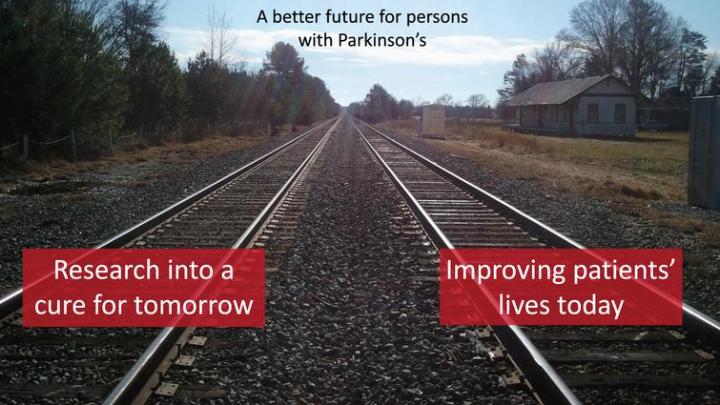In this supplement to the Journal of Parkinson’s disease experts review management strategies that can help improve quality of life of patients living with Parkinson’s disease and highlight the importance of personalized, optimal care management

Credit: Dr. Bastiaan R. Bloem and Dr. Patrik Brundin
Amsterdam, NL, September 23, 2020 – Well over six million people globally have been diagnosed with Parkinson’s disease, which has an enormous impact on the lives of patients and their families and incurring mounting costs for society. In this special supplement to the Journal of Parkinson’s Disease experts review common and vexing issues affecting people with Parkinson’s disease as well as emerging concerns such as the importance of personalized care management.
Two of the world’s leading experts in Parkinson’s disease and Journal of Parkinson’s Disease Editors-in-Chief guided the development of this landmark supplement: Bastiaan R. Bloem, MD, PhD, Department of Neurology, Radboud University Nijmegen Medical Center, Donders Institute for Brain, Cognition and Behavior, Center of Expertise for Parkinson & Movement Disorders, Nijmegen, The Netherlands; and Patrik Brundin, MD, PhD, Center for Neurodegenerative Science, Van Andel Research Institute, Grand Rapids, MI, USA.
Dr. Bloem and Dr. Brundin define the way forward as two parallel tracks. Efforts that are part of the first track aim to further unravel the etiology and pathophysiology underlying Parkinson’s disease, as a basis for development of new therapies that will slow down or even arrest disease progression.
However, they note that, “Encouraging as these developments may be, we realize that this road is paved with tremendous challenges.” They stress the importance of also investing in the second track, which aims to develop better care for the many patients who currently experience the impact of Parkinson’s disease.
This supplement focuses entirely on care management issues. Pragmatic in scope, the contributions offer practical advice to physicians that they can apply in their own clinical settings.
“There are exciting developments in fundamental research that will ultimately lead to novel treatments that may slow down the progression of Parkinson’s, but while we are waiting for the arrival of such treatments, this special supplement highlights a range of very important management strategies that can help to improve the quality of life of patients living with Parkinson’s disease today,” explained Dr. Brundin.
“Although Parkinson’s disease is a complex and debilitating condition, it is also a treatable one if a comprehensive, integrated and multidisciplinary approach is applied,” noted Dr. Bloem. “Of course, modern management means much more than just caring for our patients; we increasingly realize that optimal care can only be achieved by working closely together with patients and their families, in a process of co-creation and participatory care, with obviously different but equally important contributions by both professionals and patients.”
To underline the importance of patients, carers and their physicians working together, the supplement begins with a contribution by two patient advocates, John Andrejack and Soania Mathur, to reflect the “voice of the customer” as the ultimate stakeholder to optimize the care for and with patients with Parkinson’s disease. The authors stress the importance of education for themselves, their families and healthcare professionals on the disease, its symptoms, how to recognize them, new treatment options and coping strategies, and available lifestyle changes.
The prevalence of Parkinson’s disease rises sharply with age, but it also affects a significant number of young persons (under the age of 50 years) who have specific issues that merit the attention of the multidisciplinary care team. Examples include employment, sexuality, and children. Bart Post, MD, PhD, Department of Neurology, Radboud University Medical Center, Donders Institute for Brain, Cognition and Behavior, Center of Expertise for Parkinson and Movement Disorders, Nijmegen, The Netherlands, and colleagues describe the distinction between young onset Parkinson’s disease (YOPD) and late-onset. There are both genetic differences (more common in people with YOPD) and clinical differences. Dystonia (a movement disorder in which a person’s muscles contract uncontrollably) and levodopa-induced dyskinesias (movement disorders that are characterized by involuntary muscle movements) are more common in YOPD.
Moreover, people with YOPD tend to have different family and societal engagements compared to individuals with late-onset Parkinson’s disease. “These unique features have implications for clinical management and call for a tailored multidisciplinary approach involving shared-decision making,” explained Dr. Post. “Genetic testing can be considered in YOPD but should be done at centers that have proven experience in the clinical aspects, counseling dilemmas, and genetic pitfalls of testing the genes associated with Parkinson’s disease.” Evaluation of mood is of particular importance, and the authors recommend the use of a mindmap to start exploring the needs of persons with YOPD.
Other topics covered in this supplement are:
- The benefits of exercise
- Management of pain
- Management of visual dysfunction
- Sleep disorders
- Management of orthostatic hypotension
- Choice between different advanced treatments and timing
- Challenges in the management of late-stage Parkinson’s disease
- Multimorbidity and frailty
“Making sure that healthcare professionals are optimally trained requires continuous attention, and we hope that this special supplement will contribute to the lifelong learning process of professionals who have committed themselves to helping persons with Parkinson’s disease,” commented Dr. Bloem and Dr. Brundin. “At the same time, optimal care also requires active involvement of patients, and this supplement also highlights the key wishes and needs of individuals living with Parkinson’s disease.”
Parkinson’s disease is a slowly progressive disorder that affects movement, muscle control and balance. It is the second most common age-related neurodegenerative disorder affecting about 3% of the population by the age of 65 and up to 5% of individuals over 85 years of age.
###
Media Contact
Diana Murray
[email protected]
Related Journal Article
http://dx.




